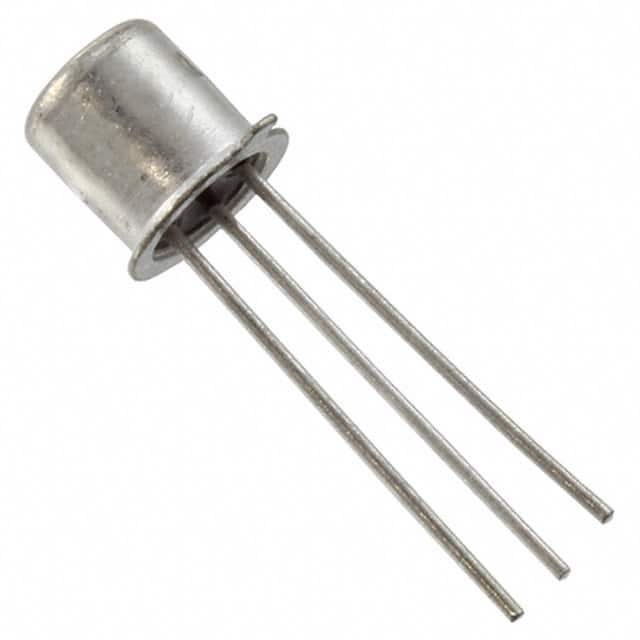Lihat spesifikasi untuk detail produk.

BC107 Transistor
Product Overview
Category
The BC107 is a small-signal NPN bipolar junction transistor (BJT).
Use
It is commonly used for amplification and switching of electronic signals in various applications.
Characteristics
- Low power, low frequency transistor
- High current gain
- Small package size
Package
The BC107 is typically available in a TO-18 metal can package.
Packaging/Quantity
It is usually sold in reels or tubes containing multiple units.
Specifications
- Collector-Base Voltage (VCBO): 45V
- Collector-Emitter Voltage (VCEO): 20V
- Emitter-Base Voltage (VEBO): 5V
- Collector Current (IC): 100mA
- Power Dissipation (Ptot): 300mW
- Transition Frequency (ft): 150MHz
- Operating Temperature Range: -65°C to 200°C
Detailed Pin Configuration
The BC107 transistor has three pins: 1. Base (B) 2. Collector (C) 3. Emitter (E)
Functional Features
The BC107 transistor offers the following functional features: - High current gain - Low noise - Good linearity
Advantages and Disadvantages
Advantages
- Small package size
- High current gain
- Low power consumption
Disadvantages
- Limited voltage and current handling capabilities
- Relatively low transition frequency
Working Principles
The BC107 operates based on the principles of bipolar junction transistors, utilizing the control of current flow between its terminals to amplify or switch electronic signals.
Detailed Application Field Plans
The BC107 transistor finds application in various electronic circuits, including: - Audio amplifiers - Oscillators - Switching circuits - Signal processing circuits
Detailed and Complete Alternative Models
Some alternative models to the BC107 include: - BC108 - BC109 - 2N2222 - 2N3904
In conclusion, the BC107 transistor is a versatile component widely used in electronic circuits for signal amplification and switching. Its compact size and high current gain make it suitable for a range of low-power applications.
[Word count: 298]
Sebutkan 10 pertanyaan dan jawaban umum terkait penerapan BC107 dalam solusi teknis
What is the BC107 transistor used for?
- The BC107 transistor is commonly used for general-purpose amplification and switching applications in electronic circuits.
What are the key specifications of the BC107 transistor?
- The BC107 is a low power, low frequency NPN transistor with a maximum collector current of 100mA and a maximum collector-emitter voltage of 45V.
Can the BC107 be used for audio amplifier circuits?
- Yes, the BC107 can be used in small signal audio amplifier circuits due to its low power and low noise characteristics.
How do I identify the pin configuration of the BC107 transistor?
- The pinout of the BC107 transistor is typically Emitter (E), Base (B), and Collector (C).
What are some common circuit configurations using the BC107 transistor?
- Common circuit configurations include common emitter amplifiers, switch circuits, and oscillator circuits.
What are the typical operating conditions for the BC107 transistor?
- The BC107 transistor operates well within a temperature range of -65°C to 150°C and is suitable for low voltage applications.
Can the BC107 be used in high-frequency applications?
- No, the BC107 is not suitable for high-frequency applications due to its low frequency characteristics.
Are there any common alternatives to the BC107 transistor?
- Yes, common alternatives include the BC108 and BC109 transistors, which have similar characteristics and pin configurations.
What are the typical gain characteristics of the BC107 transistor?
- The BC107 transistor has a moderate current gain (hFE) ranging from 110 to 800, making it suitable for various amplification tasks.
Can the BC107 be used in power control circuits?
- No, the BC107 is not designed for high-power applications and is more suited for low power signal amplification and switching.
Is there anything else you would like to know about the BC107 transistor or its applications?

